Happy B’day Stephanie. Time Travel- Mere
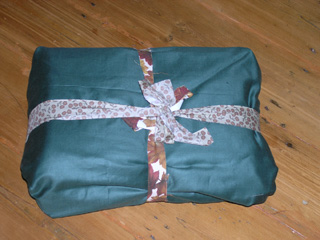 As some of you know there was a special birthday. I prepared ahead.
As some of you know there was a special birthday. I prepared ahead.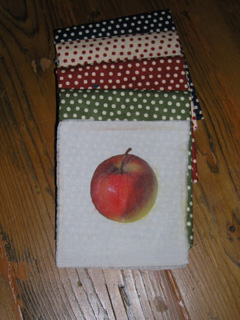 A friend drew an apple on fabric (so wish I could draw) to go with these fabrics. The person likes dots.
A friend drew an apple on fabric (so wish I could draw) to go with these fabrics. The person likes dots.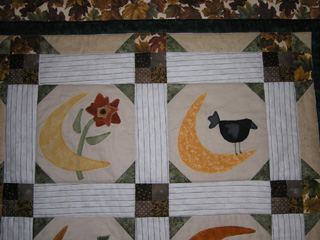 I added a little something I had made. There are brown dots if you look carefully.
I added a little something I had made. There are brown dots if you look carefully.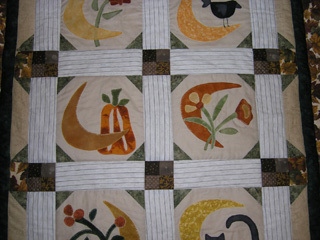 Each fabric was chosen based on a picture I had in my head of an abandoned white wooden house by a swamp in Autumn. Luckily I found a pic on the internet so I could share the idea.
Each fabric was chosen based on a picture I had in my head of an abandoned white wooden house by a swamp in Autumn. Luckily I found a pic on the internet so I could share the idea.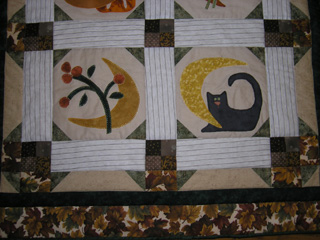 Imagine waking with a hunter’s moon still up and what the trees around the old swamp house would look like and what you might see on such a magical night.
Imagine waking with a hunter’s moon still up and what the trees around the old swamp house would look like and what you might see on such a magical night.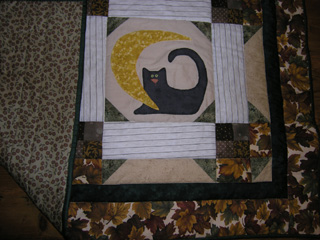 Even the cat looks a little moonstruck.
Even the cat looks a little moonstruck.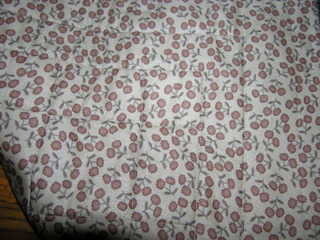 The background fabric Blondie sent me a while back was so perfect for this. Thank you Blondie.
The background fabric Blondie sent me a while back was so perfect for this. Thank you Blondie.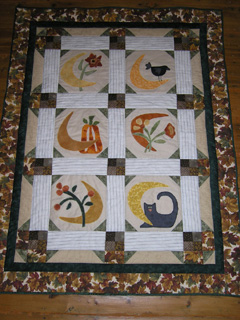 The birthday girl was Stephanie of Loft Creations. She’s been very good -it arrived weeks early as I thought the postal strike would delay it but she waited until the actual day. Go and wish her a very special Happy Birthday. I know she would love to hear from you.
The birthday girl was Stephanie of Loft Creations. She’s been very good -it arrived weeks early as I thought the postal strike would delay it but she waited until the actual day. Go and wish her a very special Happy Birthday. I know she would love to hear from you. Now back to the wetlands. Whooper swans on Martin Mere
Now back to the wetlands. Whooper swans on Martin Mere Flocks of pink footed geese come in, in their thousands.
Flocks of pink footed geese come in, in their thousands.
Have a listen -this is a common sound in the whole area as flocks fly in with distinct v shaped formations. Once here however they land where they can.
Once here however they land where they can. Let me take you on a little journey through time.
Let me take you on a little journey through time. This is the latest hide built on Martin Mere. A “mere” is a lake or pool. The word is Old English and is similar to the Dutch and German “Meer;” the Welsh “Mor;” and the Latin “Mare” (means sea) . Martin means “tun (farmstead) by the mere” in Saxon or Old English. So in short you are saying “Farmstead by the mere, mere.” There is a lot of repetition in Old English place names. The Brendon Hills are a classic example where successive peoples lived in an area and renamed it slightly for their understanding so it means “hill, hill, hills.”
This is the latest hide built on Martin Mere. A “mere” is a lake or pool. The word is Old English and is similar to the Dutch and German “Meer;” the Welsh “Mor;” and the Latin “Mare” (means sea) . Martin means “tun (farmstead) by the mere” in Saxon or Old English. So in short you are saying “Farmstead by the mere, mere.” There is a lot of repetition in Old English place names. The Brendon Hills are a classic example where successive peoples lived in an area and renamed it slightly for their understanding so it means “hill, hill, hills.” Black and white
Black and white Sepia
Sepia Shaped like a bird in wood. (My fav pic because of how the sky turned out.)
Shaped like a bird in wood. (My fav pic because of how the sky turned out.) It almost feels like you have stumbled onto an ancient ritual site.
It almost feels like you have stumbled onto an ancient ritual site. But you can see the doors from this angle into the hide.
But you can see the doors from this angle into the hide. This is the modern view over part of the Mere.
This is the modern view over part of the Mere. The landscaping in front of the hide.
The landscaping in front of the hide. Iron Age swellings like these were once here. Click below to read.
Iron Age swellings like these were once here. Click below to read.
 They navigated the mere in dugout canoes in this style 1500 years ago. Many have been found along with spears and even eeel forks so we have an idea of their diet. The spade was used to dig out peat for fuel.
They navigated the mere in dugout canoes in this style 1500 years ago. Many have been found along with spears and even eeel forks so we have an idea of their diet. The spade was used to dig out peat for fuel. That info was in this pic. But just look at that frame! Wouldn’t a stitchery look great in that?
That info was in this pic. But just look at that frame! Wouldn’t a stitchery look great in that? Old maps show just how big the mere was before modern drainage ditches turned a lot of the area into farm land for vegetables. Martin Mere are slowly bringing more land back to it’s original state as it is so important for the wildlife and traditional wetland migration routes.
Old maps show just how big the mere was before modern drainage ditches turned a lot of the area into farm land for vegetables. Martin Mere are slowly bringing more land back to it’s original state as it is so important for the wildlife and traditional wetland migration routes. Later people lived more like this on the edge of the Mere.
Later people lived more like this on the edge of the Mere. We have one last look around ahead of us and I will tell you more about the Whooper Swans. Then this should be a craft blog for a while as I’ve not gone anywhere. 🙂
We have one last look around ahead of us and I will tell you more about the Whooper Swans. Then this should be a craft blog for a while as I’ve not gone anywhere. 🙂

Posted in Uncategorized by House Elf with 15 comments.